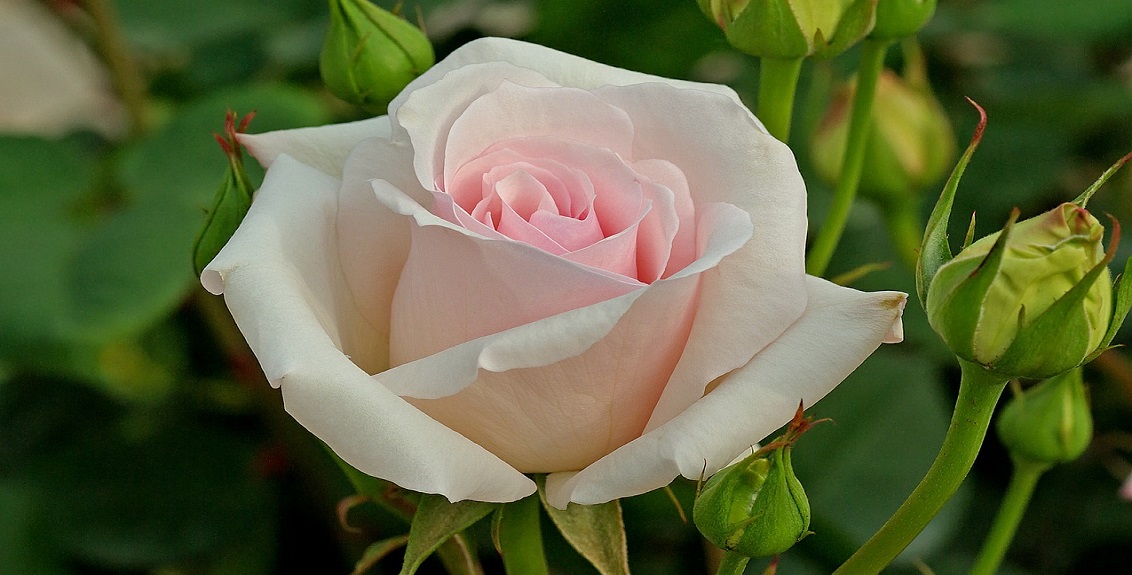There’s nothing more beautiful than a rose bush covered with lush blossoms and healthy green leaves. How to grow roses without a lot of strain and effort? Follow these tips and you can grow healthy roses.
Prepare the soil
If you’re planting a rose bush dig a hole about 1 and half times as deep as the rose bush container and twice as wide.
- Add slow release fertilizer per package directions to the bottom of the hole, then a shovel full of compost, a shovel of the soil you removed and a bit more fertilizer.
- Remove the rose bush gently from the container and set in the hole. The soil line on the rose bush from the container should be the same as in your garden. If it’s too high remove a bit more soil from the planting hole. If it’s a bit too low add another shovel of soil.
- When it’s just right, gently scratch the roots from the bottom of the root ball and around the sides. That will encourage the roots to start branching out into the new hole.

- Fill the hole half way, alternating soil and compost with a sprinkle of fertilizer.
- Water thoroughly. When the water has been absorbed by the soil, fill the hole to the top and water again.
Refresh the soil
Dig a few inches deep around the base of your rose out to the edges of the bush. Remove about half of the soil and replace with compost, or bagged topsoil, mixed with slow release fertilizer – follow package directions. Add a layer of mulch a couple of inches deep to retain the moisture in the soil. The mulch will break down over the season and add organic matter to the soil.
Catch problems before they start
If you see aphids or other buggy creatures remove them immediately. Don’t wait until you get to the nursery for bug spray. Most creatures can be washed off with a strong spray of water. Aphids can be sprayed with a mixture of 1/2 teaspoon dishwashing liquid to one quart of water. Spray on the aphids. If you don’t have a sprayer handy use a sponge. It’s messier but it works.
Look at your roses as they grow and treat problems right away. Look at the leaves for disease or brown spots. Don’t get too worried if leaves are a bit yellowish-greenish or new growth is kind of reddish, that can be normal. If the veins of the leaves are dark green but the leaf itself is yellow it could be a sign of iron deficiency. That’s easily treatable. If the entire leaf is yellow that could be a sign of nitrogen deficiency, again easily corrected.
Water but don’t over water
Roses don’t like getting their leaves wet and they don’t like keeping their feet wet. Don’t water on a preset schedule. Water when the top 3 or 4 inches of soil is dry, then soak the plants.In very humid climates don’t crowd your roses with other plants, it invites fungus diseases. In hot dry climates don’t water every day, plant the roses so they receive afternoon shade.
Remove spent blossoms
The only purpose of a flower is to produce seed.Remove the spent blossoms and the rose will continue to bud and flower. The exception is if the rose is of a variety that only blooms once a year. In that case leave the blossoms and enjoy the display.
Follow these easy tips and you will have no problem growing healthy roses.

